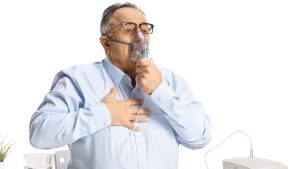Articles / Practical tips for acne management


writer
General Practitioner; Co-Director, Sydney Perinatal Doctors
Affecting 85% of 15-24-year-olds, acne is the most prevalent skin disease according to the Australasian College of Dermatologists. “But don’t forget it can extend into the 30s and 40s,” says dermatologist Dr Jo-Ann See from Central Sydney Dermatology.
“It does affect people’s quality of life,” she says. It can affect self-esteem and is associated with an increased risk of anxiety and depression.
Both active acne and acne scarring contribute to poor mental health outcomes, so Dr See advises “it’s really important to treat acne safely and early.”
Acne is a clinical diagnosis made upon examination, but Dr See warns that it can co-exist with other skin conditions such as rosacea, seborrhoeic dermatitis and folliculitis. Acne can also mimic other conditions, such as perioral dermatitis or drug eruptions.
“We don’t normally have to investigate it,” Dr See says, but it may be worth considering bloods if you think the acne is hormonal or are concerned about underlying polycystic ovarian syndrome.
In these patients, Dr See recommends ordering testosterone, sex-hormone binding globulin, DHEAS and a pregnancy test.
Investigations are also indicated in patients who may be prescribed oral isotretinoin, including liver function tests and baseline lipid levels, and a pregnancy test in females.
There are multiple available acne treatments, and they often take time to work. Dr See says that good communication and adequate follow-up are key here.
“Always review the patient. Once you’ve given treatment, review them. Have a Plan B. They will be really reassured by that,” she says. “And give them a realistic timeframe when they can expect to be better,” she adds. Most acne treatments will show improvement by 6 weeks.
Dr See recommends keeping a visual algorithm of acne treatment in your office that delineates treatment options according to severity, although she says we also need to consider morphology and location of lesions. “And don’t forget – you’re looking at the face, but ask them about their chest and their back,” she says.
Age is also an important factor in treatment decisions. “Sometimes you’ll meet a young patient, a first timer,” Dr See explains, “but then you might meet someone in their twenties and thirties. They’re over it. They think they’ve done everything.” In these patients, you may wish to treat more aggressively.
“Ask them how they’re feeling,” Dr See says. You may think their acne does not look too severe, but it may be significantly affecting their quality of life. Conversely, you may notice severe acne on a patient during a consultation for something else entirely, and the acne may not be their priority.
Mild acne
“Mild acne is superficial in nature,” Dr See explains, involving blackheads and whiteheads that are usually not inflammatory in nature. Patients will commonly have tried over the counter options before they seek medical advice. Treatments they may already have tried are benzoyl peroxide, azelaic acid and “these mystery cosmoceutical treatments of alpha and beta hydroxy acids,” by which Dr See means glycolic, lactic or salicylic acid.
Benzoyl peroxide has been available for decades. “It’s inexpensive and it’s effective,” she says. It works to unclog the pimple, and has an anti-inflammatory action. “But one of its best benefits is that it limits the development of antibiotic resistance.” It can cause dryness and irritation, and it is also worth warning patients that it can bleach clothing or linen.
Azelaic acid may be over the counter or on prescription. “It’s a fairly mild treatment and one of its benefits is that it can help to decrease hyperpigmentation.”
Prescription options for mild acne are usually topical antibiotics, most commonly clindamycin. Dr See says that the most frequent brand given is ClindaTech, which is alcohol based. “It’s particularly good on the trunk,” she says, but patients with more sensitive skin may prefer Dalacin C lotion.
Erythromycin is less commonly used due to its association with antibiotic resistance.
For topical prescription treatment that is not an antibiotic, the next option is a Vitamin A derivative. “The oldest one on the market is topical tretinoin,” she says. “Now sometimes this can really be irritating for patients and you might want to think of the half-strength.” There are other newer retinoids on the market which are also often less irritating.
Dr See describes them as very safe and effective, although they should not be used in women who are thinking of falling pregnant.
Dr See considers the mainstay of mild acne treatment to be a “topical fixed dose”, when two different treatments are combined for a synergistic effect. Examples include clindamycin with tretinoin, clindamycin with benzoyl peroxide, and adapalene with benzoyl peroxide.
Irritation is a common problem with many topical treatments. Dr See says patients often complain of redness, scaling and itchiness. She says it is important that topicals are applied at night to a cool, dry face. A hot just-showered face absorbs more medication and is therefore more likely to be irritated. She recommends starting with alternate daily applications, and remembering to use gentle skin care.

Moderate acne (or mild acne that’s not responding to topicals)
For moderate acne or for mild acne that isn’t responding to topicals, oral antibiotics are used over a couple of months to bring the condition under control. “Now the important thing is don’t use them as monotherapy,” says Dr See, who recommends they are used alongside a topical retinoid or benzoyl peroxide. She recommends trying to limit oral antibiotic treatment to 3-4 months to prevent resistance.
Tetracyclines are both antibiotics and anti-inflammatory, therefore very effective for papules and pustules. Patients need to be warned about sun sensitivity and gastrointestinal side effects. Minocycline is used less than doxycycline due to risk of pigmentation, autoimmune hepatitis and other drug reactions.
Second line antibiotic choices (for example for children or pregnant women) include erythromycin, azithromycin, cephalexin and amoxicillin. Trimethoprim and sulfamethoxazole can be helpful as a third line option if nothing else is working.
When nothing seems to be working
“What do I do when nothing is working?” Dr See asks. This may be a patient with no improvement, in whom the side effects of treatment have been unacceptable, or both. At this point, she recommends considering if the underlying mechanism is hormonal, or if the acne has upgraded in severity. She reminds us to check in with the patient again regarding the psychological impacts.
At this point, she advises us to “scale up” – add in an oral antibiotic if you haven’t already. If you think it may be hormonal, trial an oral contraceptive and/or spironolactone.
“But don’t forget, the door is always open. Reach out. Refer,” she says. Whilst the obvious choice here may be the dermatologist, she notes that other specialists may play a role – a gynaecologist for suspected polycystic ovarian syndrome, an endocrinologist for insulin resistance, or a psychologist for appropriate counseling.
Dr See describes hormonal acne as particularly tricky, often seeming unfair for lasting well into adulthood. There is often a familial pattern, so it is worth asking the patient about their mother or sisters. There is usually a cyclical flare, worsening just before the period, and with stress. It is often associated with signs of hyperandrogenism, such as irregular menses or hirsutism.
Once acne has been treated, it is likely the patient will still need some form of maintenance therapy. Dr See says most dermatologists would pick a topical retinoid for this, a few times a week for 6-12 months. She says it is important to inform the patient that acne may return, and to come back if it does.
“You really should know about the acne myths so that you can dispel them.” Dr See has noticed that social media offers a plethora of influencers with opinions on acne management. She notes that it can be hard for patients to know where to look for reputable, evidence-based advice—she recommends All About Acne (acne.org.au) or the Australasian College of Dermatologists website.
“The take home message for all of us is that acne can be effectively treated in almost all patients,” Dr See says.

Managing Prostate Cancer Treatment Update

RSV, Respiratory Viral Infections and the Heart – Exert Panel

Thyroid Disease in Pregnancy

writer
General Practitioner; Co-Director, Sydney Perinatal Doctors


Strongly support
Somewhat support
Neither support nor oppose
Somewhat oppose
Strongly oppose
Listen to expert interviews.
Click to open in a new tab
Browse the latest articles from Healthed.
You have completed the Educational Activities (EA) component of this activity.
Select ‘Confirm & claim CPD‘ to confirm you have engaged with this activity in its entirety and claim your CPD.
You will be taken to explore further CPD learning available to you.